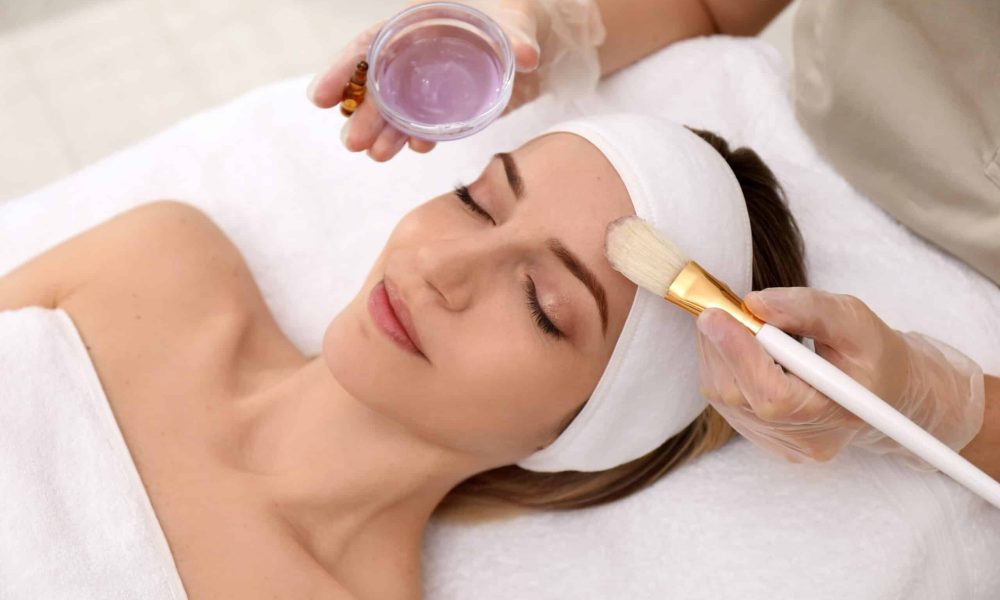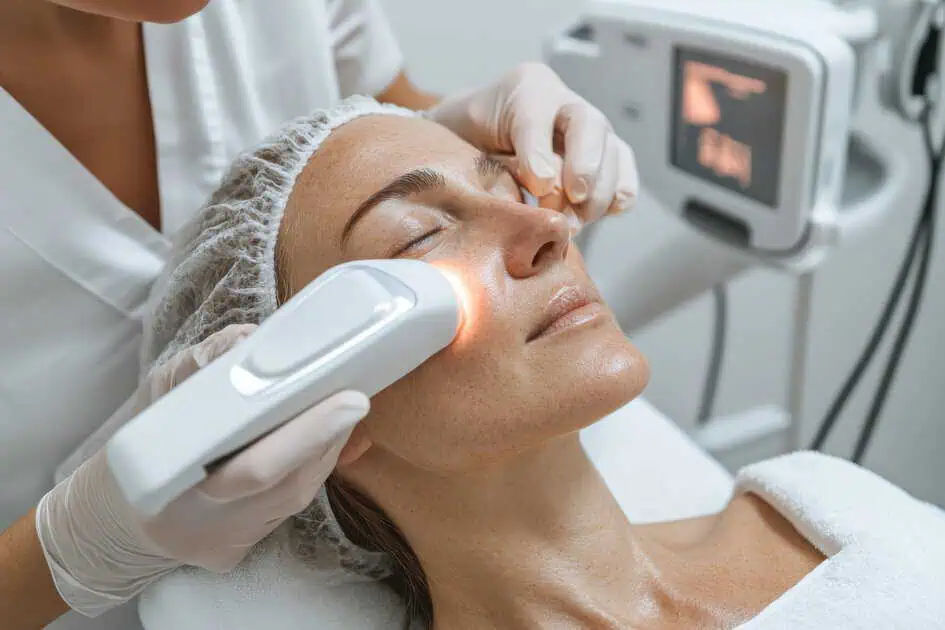Chemical peels have become a popular cosmetic treatment due to their ability to rejuvenate and improve the appearance of the skin. By exfoliating dead skin cells and boosting collagen production, chemical peels offer a range of benefits, including smoother texture, diminished wrinkles, and a more even complexion. This article will probe the science behind chemical peels, explaining how they work and what you can expect from this transformative skincare treatment.
Understanding Chemical Peels
A. Definition and Purpose: Chemical peels are skincare treatments designed to exfoliate the skin by applying a chemical solution. Their primary purpose is to remove dead skin cells, stimulate cell turnover, and reveal healthier, more youthful-looking skin. Regular exfoliation is crucial for maintaining healthy skin as it aids in the removal of dull, damaged cells and allows new cells to emerge.
B. Types of Chemical Peels: Different chemical peels are available, each varying in-depth and targeting skin concerns. Superficial peels are gentle and mainly target the outermost layer of the skin, providing mild exfoliation and rejuvenation. Medium peels penetrate deeper into the skin, treating concerns like fine lines, acne scars, and hyperpigmentation. Deep peels are the most intensive and address severe skin conditions by reaching the deepest layers of the skin.
The Science Behind Chemical Peels
A. Composition of Chemical Peels: Chemical peels contain specific ingredients that determine their exfoliating properties. Common ingredients include alpha hydroxy acids (AHAs), beta hydroxy acids (BHAs), and trichloroacetic acid (TCA). AHAs, such as glycolic and lactic acid, break down the bonds between dead skin cells and facilitate their removal. BHAs, like salicylic acid, are oil-soluble and penetrate the pores, making them effective for acne treatment. TCA is a medium to deep peel agent that induces a controlled injury to the skin, leading to the regeneration of new, healthier cells.
B. Mechanism of Action: Chemical peels accelerate the natural exfoliation and skin rejuvenation process. When the chemical solution is applied to the skin, it breaks down the bonds between dead skin cells, causing them to slough off. This process removes dull and damaged skin, allowing new skin cells to surface. By eliminating the outermost layer, chemical peels reveal a fresher, more vibrant complexion and promote cellular turnover, leading to the development of healthier skin.
C. Collagen Stimulation: Collagen, a protein that provides structure and elasticity to the skin, is crucial in maintaining a youthful appearance. Chemical peels stimulate collagen production through controlled injury to the skin. The peeling process triggers the release of growth factors and signals the body to produce new collagen fibers. As a result, the skin becomes firmer, more elastic, and fine lines and wrinkles are diminished.
What to Expect During a Chemical Peel
A. Preparing for a Chemical Peel: It is essential to prepare the skin adequately before undergoing a chemical peel. This may involve avoiding sun exposure, discontinuing certain skincare products, and following specific instructions provided by your dermatologist or skincare professional. Consulting with a professional is crucial to determine the most suitable type and concentration of peel for your skin concerns.
B. The Treatment Process: During a chemical peel session, the skin is thoroughly cleansed, and the appropriate chemical solution is applied. The duration of the treatment varies on the type of peel being used. You may experience a slight tingling or stinging sensation during the application, which is temporary and subsides shortly. Your skincare professional will closely monitor the peel and may neutralize it at the appropriate time to ensure optimal results. The duration of the treatment and the sensations experienced can vary depending on the depth of the peel and individual sensitivity.
C. Post-Peel Care and Recovery: After a chemical peel, following specific post-peel care instructions provided by your skincare professional is essential. This typically involves gentle cleansing, moisturizing, and sunscreen to protect the newly exposed skin. It is common to experience some redness, mild peeling, and dryness in the days following the peel. It is crucial to avoid picking at the skin or using harsh products during this period to enable proper healing and reduce the risk of complications.
Benefits and Results
A. Immediate and Short-Term Effects: One of the immediate benefits of chemical peels is improving skin texture and tone. They help to diminish the appearance of fine lines, reduce hyperpigmentation, and unclog pores, leading to a smoother and more even complexion. Chemical peels can temporarily relieve skin concerns, such as acne breakouts and superficial scars. The extent of these immediate effects depends on the type and depth of the peel performed.
B. Long-Term Results: While chemical peels offer immediate benefits, they also provide cumulative and long-term results. Regular sessions can lead to increased collagen production and remodeling over time, improving the skin’s overall quality and reducing the signs of aging. Collagen stimulation helps to enhance skin elasticity, firmness, and resilience, resulting in a more youthful appearance.
Safety and Considerations
A. Suitability for Different Skin Types: Chemical peels can suit various skin types, including sensitive and darker skin tones. However, it is crucial to tailor the type and concentration of the peel to individual needs and consider any specific skin concerns or sensitivities. Consulting with a skincare professional or dermatologist is essential to ensure the peel is appropriate for your skin type and to minimize the risk of adverse reactions.
B. Potential Risks and Side Effects: While chemical peels are generally safe, there are potential risks and side effects associated with the treatment. These may include temporary redness, peeling, and dryness, which are natural during healing. More severe complications such as hyperpigmentation, infection, or scarring can occur in rare cases. To lessen these risks, it is crucial to choose a qualified professional with experience performing chemical peels and to follow all pre and post-peel instructions diligently.
Conclusion
Chemical peels offer a scientifically proven method for achieving smoother, rejuvenated skin. By understanding the science behind chemical peels and what to expect during treatment, individuals can make informed decisions about incorporating this skincare procedure into their beauty regimen. Chemical peels, when administered by trained professionals, can provide the following:
- Immediate and long-term benefits.
- Resulting in improved skin texture.
- Diminished signs of aging.
- A more youthful appearance.
However, it is essential to prioritize safety, follow professional advice, and be aware of the potential risks associated with chemical peels.
If you are considering a chemical peel, trust your skin with the experts at COMO Aesthetics. Their team of experienced skin care professionals specializes in providing customized and effective chemical peel treatments. With their expertise, advanced techniques, and commitment to client satisfaction, COMO Aesthetics ensures a safe and comfortable experience throughout your chemical peel journey. By choosing COMO Aesthetics, you can be confident that you are in the hands of competent professionals who prioritize your skincare goals and deliver exceptional results. Experience the transformative power of chemical peels with COMO Aesthetics and unveil the radiant, youthful skin you deserve.





